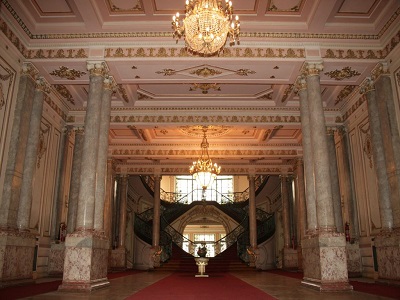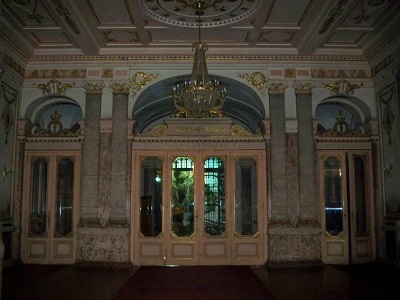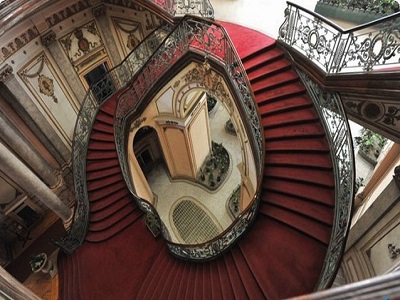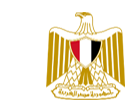Al- Zaafaran Palace
The Zaafaran Palace
was built during the era of Khedive Ismail in 1870. The palace was so named
because the area surrounding it was famous for saffron (in Arabic Zaafaran)
plantations. It was one of the royal palaces, and it is said that King Farouk
was born there.


It was also used to
host the administration offices of the Egyptian University when it was
established in 1925. It was used by the Ministry of Foreign Affairs (as a guest
house) for accommodating important visitors. The palace also witnessed the
signing of the 1936 Treaty between Egypt and Great Britain. Finally, in 1952,
it came to be used as the administrative headquarters of Ain Shams University.
The palace was
similar to the Palace of Versailles in France, where Khedive Ismail spent a
period of his education. The Khedive has asked to carve his initials, and his
crown at the palace's entrances and inscriptions still exist until now.
In 1872, Khedive
Ismail gave the palace to his mother Khoshyar Hanim, as doctors advised her to
live in a place with fresh air, and the Zaafaran Palace was the perfect place
as it has vast gardens planted with Zaafaran.
The palace consists
of three main floors. The first floor has a collection of Roman-Greek columns
of green and yellow marble with gold crowns on top. It also has a reception
hall on the left side of the entrance door.
Next to the reception hall, there are two big halls and a dinning room
with capacity of 49 people.
The second floor has eight bedrooms, each of which has
a salon and a large marble bathroom, and the room walls decorated with colorful
flowers and roses patterns. The main
hall is on the left side as you enter from the stained-glass door, and there
are two reception halls reached through a large copper staircase covered in
gold. The staircase has two sides elevating the level of the palace’s floors.


The palace also has an underground floor includes the
kitchens and servant rooms.
In 1985, Al-Zaafaran Palace was designated as an
Islamic monument, given its historical value as a witness to Egypt’s modern and
contemporary history. Moreover, Ain Shams University began the restoration and
maintenance of this famous landmark in 1994 in cooperation with the Egyptian
Antiquities Authority, taking into consideration preserving the architectural
and archaeological features of the palace. Unfortunately, the condition of the
landmark was deteriorated, and it was renovated again in 2010.
Address:
The Zaafaran palace
is located in Abbasia district. Now it is inside the main campus of the Ain
Shams University.


